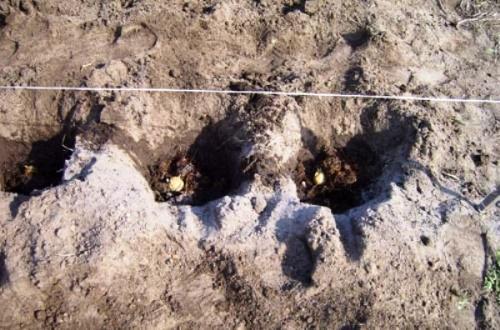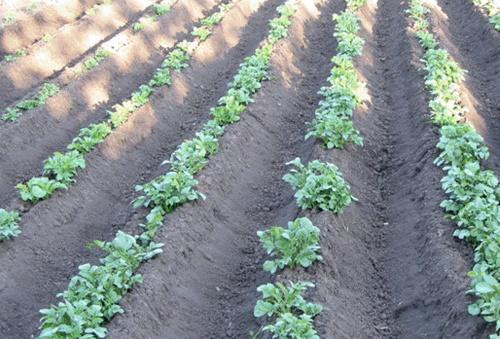Planting potatoes: which way is better
 When growing potatoes, the main task of gardeners is to obtain a bountiful harvest, as well as the simplest care of plantings. Depending on the region of cultivation, preferences and capabilities of the summer resident, different methods of planting potatoes are used. Each of them has both its advantages and disadvantages, and which ones, let's briefly consider.
When growing potatoes, the main task of gardeners is to obtain a bountiful harvest, as well as the simplest care of plantings. Depending on the region of cultivation, preferences and capabilities of the summer resident, different methods of planting potatoes are used. Each of them has both its advantages and disadvantages, and which ones, let's briefly consider.
Regardless of the method, they begin to prepare the site for potatoes in the fall, adding organic fertilizers for digging. In the spring, additional application of mineral preparations is possible.
So, most often potatoes are planted:
- smooth fit;
- into the ridges;
- in trenches with compost.
Smooth fit
The traditional method of planting tubers under a shovel is as simple as possible: in the spring, the plot is leveled, while loosened up the soil with a rake. Then they begin to dig shallow holes in a row (about half a shovel) and put one large sprouted root vegetable or 2-3 small sprouts upward in each. The previous row is covered with earth from the holes of the next row. Landing quite dense: the width of the row spacing is up to 50 cm, and between the holes themselves up to 30 cm. In the future, the planting is spud twice before flowering begins.
Ash and eggshells can be added to the holes during planting.
This method is as simple as possible, does not require the purchase of additional material and accessories (except for a shovel, rake and hoe). However, due to the density of the plantings, they are not very convenient to process, and there is a risk of damaging the roots during hilling or weeding, and it is not very suitable for clay soil.
Features of planting in ridges
There are two ways to plant potatoes in the ridges:
- Make long ridges with a motor-block at least 15 cm high with a row spacing of 70 cm.Tubers should be laid out along the top of the ridge with a frequency of every 30 cm.
- First, plant the potatoes in long rows, observing the same distances, and form a continuous ridge along the row already in the process of hilling, pouring soil from the rows under the bushes.
This method is considered preferable for growing potatoes on heavy and wet soils, as well as in the northern regions, in addition, it allows you to minimize manual labor by using a walk-behind tractor. However, for a warm southern climate and on sandy soil, it is not advisable to use it, since the bushes at the top of the ridge dry out quickly and therefore need frequent watering.
Planting in compost trenches
In the fall, dig long trenches on a shovel bayonet, place grass or hay in them and sprinkle with fresh manure. You can also add some urea and ash. In spring, plant tubers in rotted compost and cover with earth.
It is possible to build trenches just before planting, however, in this case, rotted compost should be laid on the bottom.
Compost trenches are ideal for sandy soil that dries quickly. The organic bedding prevents this and also warms the tubers, protecting them from frost, and also provides them with nutrients.Among the shortcomings, it is worth noting the need to search for raw materials for the manufacture of compost. In addition, this method is not suitable for damp soils, as potatoes will rot in the trenches.